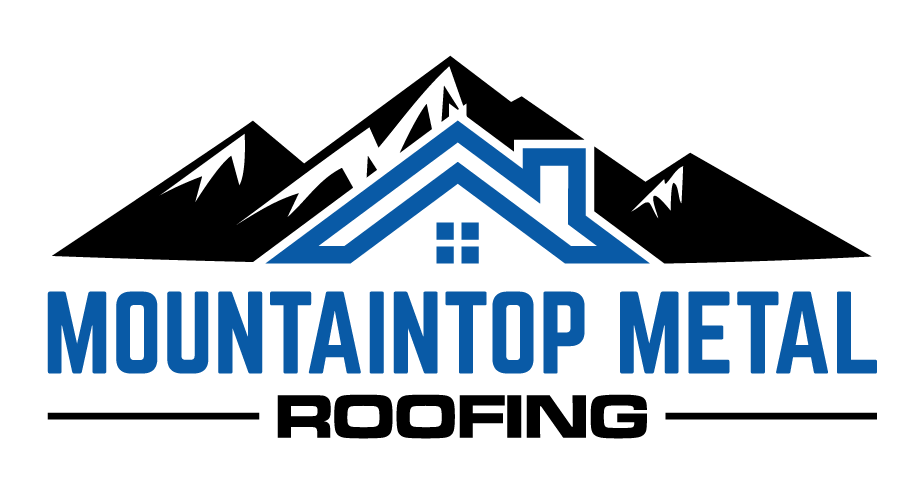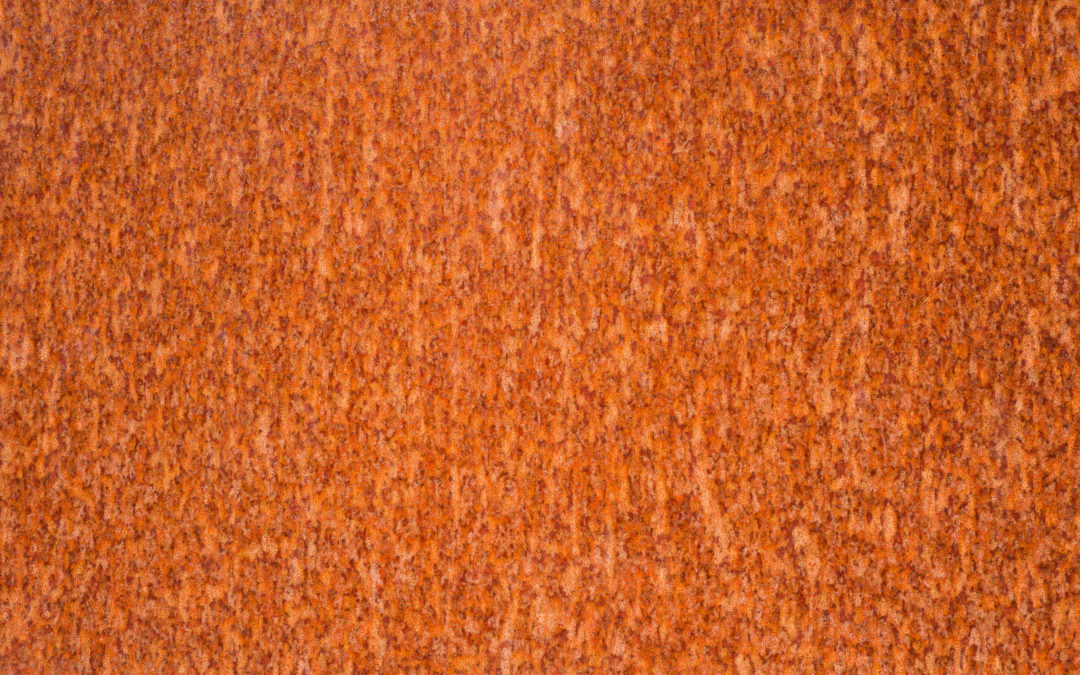(Updated Oct. 23, 2023)
Our team at Mountaintop Metal Roofing often hears the question, “Do metal roofs rust?” It’s a fair question, right? When we think of metal and rain, it’s not too much of a stretch to think about rusted-out corrugated panels, trailers, exterior doors, and so on. But metal roofing has come a long way since the days of rust-stained farm roofs and other situations where inferior materials have been used.
Today’s metal roofs are known for their durability and longevity, making them a popular choice for residential and commercial buildings. However, one common concern associated with metal roofs is the potential for rust. Metal roofing materials are typically made from steel, aluminum, or other alloys, and while these materials are inherently resistant to rust, certain conditions can still lead to rust formation over time.
How Does Metal Rust?
Rust forms as a result of a natural chemical process called oxidation. When certain metals, especially iron and alloys that contain iron, come into contact with oxygen and water or moisture for extended periods, a reaction occurs that leads to rust formation. This process is accelerated when the metal is exposed to salt, acids, or other corrosive elements.
As the metal corrodes, it weakens and loses its structural integrity, eventually leading to deterioration. Preventing rust involves protecting metal surfaces from direct exposure to moisture and oxygen by using coatings, paints, or galvanization, which forms a protective layer.
Aluminum roofing is well-known for its resistance to rust and corrosion, making it an ideal choice for a wide range of roofing applications. It is naturally resistant to rust, a common issue found in other metals like iron or steel. When exposed to oxygen, aluminum forms a thin layer of aluminum oxide on its surface, acting as a protective barrier against environmental elements–especially moisture.
How Are Metal Roofs Protected?
Metal roofs are typically rust-resistant through a combination of galvanization, paint or coatings, and regular maintenance. Galvanizing roofing involves coating the metal, typically steel, with a layer of zinc. This protective zinc layer acts as a sacrificial barrier, corroding in place of the underlying metal.
In copper roofing, zinc can also improve the look of the roof over time. When exposed to moisture, copper gradually develops a protective layer called a patina, which is a greenish or bluish film on the surface. This patina forms as a natural reaction to oxidation and environmental exposure, serving as a protective barrier that helps to prevent further corrosion and enhances the longevity of the metal.
While zinc itself doesn’t develop the same distinct greenish patina as copper, it does undergo a transformation over time when exposed to the elements. Initially, zinc surfaces have a shiny appearance but as they weather, they develop a matte gray or bluish-gray appearance. This weathering process creates a protective layer that helps shield the zinc roofing from corrosion. The resulting patina on zinc, while different in color from the one on copper, also contributes to the metal’s durability and protection.
Additional Layers of Protection
Coatings and paint provide another layer of protection, further shielding the metal from the environment. Maintenance plays a role in preventing rust on metal roofs, including any signs of damage, such as chipped paint or exposed metal. While metal is the most durable form of roofing material, it won’t be able to withstand large falling branches or other heavy-duty debris that gets blown around.
Modern metal roofs are designed to be rust and corrosion-resistant, ensuring their durability and longevity. Various protective measures are employed to shield the metal from the elements and stop the formation of rust. When well-maintained and properly coated, metal roofs can withstand the elements and remain rust-free for decades, ensuring a long-lasting and reliable roofing solution for any property.
They also provide an additional aesthetic appeal to the roof while offering an extra layer of defense against moisture, UV rays, and other potential corrosive elements. Regular maintenance, such as inspections to identify and address any damage that exposes the metal, along with cleaning and recoating when needed, further enhances the protection against rust, ensuring that modern metal roofs remain resilient and rust-free for many years.
Do Metal Roofs Rust? Your Roofing Investment
Because these are different from many of the traditional roofing systems that we see in the Northwest, many people wonder if metal is worth the investment. Over long periods of time, roof products are subjected to all kinds of weather, not the least of which is moisture that can get into every nook and cranny.
When metal roofing is installed correctly, there are fewer entry points for water to do its damage. And if rust isn’t a worry, metal roofing is one of the best investments you can make for your home. Beyond its durability, metal roofing offers energy efficiency, a variety of styles and colors, and the ability to withstand a variety of weather conditions. This makes metal roofing an ideal choice for all sorts of different home styles.
Residential metal roofing offers a variety of different types of metal roofs, styles, and designs, catering to different aesthetic preferences, too. Standing seam metal roofing features vertical metal panels with raised seams that interlock above the fasteners, creating a distinct raised profile. It’s sleek, modern, and provides excellent water-shedding capabilities.
Mimicking the appearance of traditional asphalt shingles or clay tiles, metal shingles or tiles come in various shapes and colors, offering the aesthetic appeal of more conventional roofing materials while providing the durability and longevity of metal. Metal shake roofing replicates the look of natural wood shakes without having to worry about pests, splitting, or higher risk of fire.
Each style offers its own aesthetic appeal and functional benefits, catering to different architectural designs and homeowner preferences. Whether it’s a contemporary, traditional, or rustic look, residential metal roofing styles provide a versatile and durable option for a wide range of homes and architectural designs.
Metal Roofing: Only as Good as the Installation
With the rain, snow, ice, and sun that we get around the Pacific Northwest, you need a system that can withstand everything that the earth throws at it. Traditional roofing materials simply can’t do the job that a metal roof can. Metal won’t warp or crack, and with our transferable warranty, you can’t go wrong.
Interested in learning more about the variety of aluminum or steel roofs? Or perhaps you already have a metal roof, and you want to ensure that it can withstand the weather change this winter. Our experts can answer any questions you have about protective coatings, the maintenance requirements, or their benefits.
We look forward to helping you, so contact us today!

